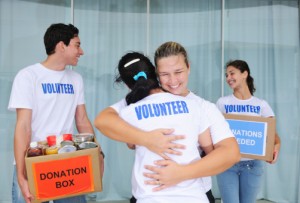

Organizations can spend several months and significant resources searching for and interviewing a new executive leader. Yet, after the position is filled, the onboarding process often does not receive the same level of effort and energy as the hiring process which leaves new leaders vulnerable – a costly risk for any organization but more so for a nonprofit whose funds are already limited.
Onboarding programs should be systematic and essential, not organic. Having a transition timeline and Welcome Guide with checklists, sample documents, FAQs and phased transition plans provides a roadmap for the onboarding experience. Core topics should include unique aspects of the organization, company culture, team building and legal matters. Preparing easy-to-digest information that is packaged into short segments allows new leaders to personally identify the areas in which they desire additional, more in depth training.
We can’t say enough how critical planning is in equipping new leaders to successfully fulfill all expectations of them in their new roles. You can make your onboarding curriculum indispensable by leveraging the experience and wisdom of past leaders who can provide real guidance to incoming staff. Taking them on a personal tour of your organization, allows them to acquire a holistic perspective on your nonprofit and an introduction to board members as well as key partners is pivotal early on so a personal connection to the organization starts to manifest well before any first official meetings.
Don’t wait to see if a new leader can succeed with little to no preparation or support and don’t ask them to attend generic onboarding sessions such as Leadership 101. They have to view the process as an essential element and not a throwaway task. Instead, zero in on your particular culture and the processes driving your organization and be sure to offer ongoing opportunities for learning and engagement during the executive’s first year.
Onboarding can often times be overwhelming and intense regardless of the size of your organization. Taking the time to develop a structured onboarding plan helps to ease the stress associated with transition and helps to ensure that your next nonprofit leader will have the tools necessary to succeed and continue the legacy you’ve already built.

UST wants to honor all the nonprofits that make a difference every day, all year long—and the amazing individuals that lead them.
We know it’s not easy running a nonprofit and here at UST our sole purpose is to “help nonprofits save money in order to advance their missions.” We’re especially proud to support the efforts of our 2,000 nonprofit members and 80 national and state nonprofit association affinity partners.
For Nonprofit Awareness Month, we wanted to share some ways individuals and nonprofits can boost their passions and causes, and gain awareness of all that nonprofits do, too:
– I am [Your Name] and I work for [Organization]. Our nonprofit employs [x] people and mobilize [y] volunteers in your district.
– Our missionj is to [Your Mission].
– We can be a resource for you on[Topics]. Please call on us if we can be of assistance.
– We would also like for you to be our guest at [Your Organization] when you are in the district. Please contact me or I am happy to follow up with you to see if we can schedule something.
Do you have a favorite nonprofit? Tell us on Facebook
Note: UST does not receive compensation for any links in this article, nor is it responsible for the content on any of the sites to which it links. This is purely educational folks!

Utilize these 4 methods to create a more balanced and productive workplace:
As a nonprofit leader, you have the power to portray change as a necessary evil or an ongoing opportunity. By setting a positive example and carefully managing both your nonprofit’s goals and employees, you can encourage your staff to constantly challenge themselves and broaden their skill sets—increasing overall organizational effectiveness.
Learn more about how to improve leadership and management practices here.

Setting measurable goals and creating systematic procedures for leadership development programs will enable you to address leadership skill gaps at a more efficient pace. Follow these 4 steps to implement an effective leadership development plan, while gaining support from your current management team:
Discover more methods on how to create future leaders here.

Sometimes it’s sudden, like an accident or health crisis, and other times it’s simply a short term window to prepare for a leader leaving—but it is always important to have a backup plan when it comes to a leader’s absence.
It’s called emergency succession planning, and it’s critical to your organization’s survival.
Like any good emergency plan (think of those fire drills as a kid in school) – there should be clearly laid out steps to your emergency succession plan. Ready to stop, drop, and roll? Here are some basic elements to any good leader succession plan:
Learn more about emergency succession planning in this report.

Even your strongest staff members can be negatively influenced when working with bad employees. Pairing others with someone who is unmotivated and performing inadequately can cause a domino effect of poor performance—making the overall business suffer.
Poor employees could chase away top performers
Top tier employees want to work with others who are just as driven and focused as they are. When talented workers see poor behavior or lack of contribution go unnoticed, they will begin looking for alternative job opportunities—ones where they can work with other high performers and feel more appreciated.
Low performers take up valuable space
By keeping low performing employees, you could be missing out on a new crop of talent. But how can you hire these rockstar candidates if there are no available roles at your organization? Making room for strong individuals who are willing to take initiative and contribute to the team is imperative when building a strong organizational foundation.
Because nonprofits often work with limited budgets and resources, developing and retaining a top-notch staff is key to successfully attaining mission objectives. And while it’s never an easy task to fire a bad employee, you’re doing what’s necessary as a leader to keep your organization moving forward.
Learn more about talent development strategies here.

But how do you find the right employee? Simple. Recruit a hiring team internally before recruiting any potential staff.
The hiring team you assemble should be your recruitment backbone—helping you create the hiring timeline, outline specific role responsibilities, and conduct interviews.
Here are 6 tips to keep in mind when creating and working with your recruitment team:
Having the support of a dedicated hiring team can help speed up the hiring process, while increasing efficiency. Knowing when and how to engage your hiring staff can help you identify the best possible candidate for any potential position—giving your nonprofit the edge it needs accomplish mission objectives.
Learn more about how to select and utilize your recruitment team here.

 mentation of a more civil society. Those elected for the honor “illustrates the power of people pushing society for equal access and opportunity…[as] recently it seems that the insistence for inclusion has need ratcheting up and sector leaders have responded.”
mentation of a more civil society. Those elected for the honor “illustrates the power of people pushing society for equal access and opportunity…[as] recently it seems that the insistence for inclusion has need ratcheting up and sector leaders have responded.”
Everyone at UST wou
ld like to extend our heartfelt congratulations to those included. We’d also like to thank all of the organizations that we work with for continuing to fight the good fight and make a difference for those around them.
See the full list of innovators being recognized by this years’ Power & Influence Top 50 here.

Follow these 5 easy steps to create sustainable changes within your nonprofit:
Change is what keeps nonprofits moving forward. Taking the time to foster cooperation amongst your employees is the easiest way to create lasting change—which provides ongoing opportunity for organizational growth within the nonprofit sector.
Learn more about how to gain employee support for organizational change here.

UST maintains a secure site. This means that information we obtain from you in the process of enrolling is protected and cannot be viewed by others. Information about your agency is provided to our various service providers once you enroll in UST for the purpose of providing you with the best possible service. Your information will never be sold or rented to other entities that are not affiliated with UST. Agencies that are actively enrolled in UST are listed for review by other agencies, UST’s sponsors and potential participants, but no information specific to your agency can be reviewed by anyone not affiliated with UST and not otherwise engaged in providing services to you except as required by law or valid legal process.
Your use of this site and the provision of basic information constitute your consent for UST to use the information supplied.
UST may collect generic information about overall website traffic, and use other analytical information and tools to help us improve our website and provide the best possible information and service. As you browse UST’s website, cookies may also be placed on your computer so that we can better understand what information our visitors are most interested in, and to help direct you to other relevant information. These cookies do not collect personal information such as your name, email, postal address or phone number. To opt out of some of these cookies, click here. If you are a Twitter user, and prefer not to have Twitter ad content tailored to you, learn more here.
Further, our website may contain links to other sites. Anytime you connect to another website, their respective privacy policy will apply and UST is not responsible for the privacy practices of others.
This Privacy Policy and the Terms of Use for our site is subject to change.
UST maintains a secure site. This means that information we obtain from you in the process of enrolling is protected and cannot be viewed by others. Information about your agency is provided to our various service providers once you enroll in UST for the purpose of providing you with the best possible service. Your information will never be sold or rented to other entities that are not affiliated with UST. Agencies that are actively enrolled in UST are listed for review by other agencies, UST’s sponsors and potential participants, but no information specific to your agency can be reviewed by anyone not affiliated with UST and not otherwise engaged in providing services to you except as required by law or valid legal process.
Your use of this site and the provision of basic information constitute your consent for UST to use the information supplied.
UST may collect generic information about overall website traffic, and use other analytical information and tools to help us improve our website and provide the best possible information and service. As you browse UST’s website, cookies may also be placed on your computer so that we can better understand what information our visitors are most interested in, and to help direct you to other relevant information. These cookies do not collect personal information such as your name, email, postal address or phone number. To opt out of some of these cookies, click here. If you are a Twitter user, and prefer not to have Twitter ad content tailored to you, learn more here.
Further, our website may contain links to other sites. Anytime you connect to another website, their respective privacy policy will apply and UST is not responsible for the privacy practices of others.
This Privacy Policy and the Terms of Use for our site is subject to change.
Answer: Handling this type of discussion on such a sensitive subject can be difficult, but it is also an excellent opening for a frank conversation with that employee about his professional needs while you get direct feedback about his view of his job and the company. We recommend this approach:
During the course of these types of conversations, although compensation may be mentioned as the presenting problem, often the issue is really not that: You could find that the issues are more about the job itself, development opportunities, career goals, or other considerations. Consider the complete picture and be prepared to have a career development discussion with the employee about where he currently fits in the organization, what additional skills he may need to move his career in the direction he wants it to go, or other considerations.
The keys to these types of conversations are to treat the employee with respect and not dismiss his concerns without a good discussion of all of the relevant factors. Assure the employee that you value and respect his contributions to the business and want to do all you can as his manager to help him be productive and feel good about his contributions to the business.
This Q & A was provided by ThinkHR, powering the UST HR Workplace—a cloud-based HR platform provided to UST members at no additional cost. If you’re a 501(c)(3) nonprofit, get your toughest HR questions answered by signing up for a free 30-day trial